Back to main blog
2. Did teaching a 2 or 3 year curriculum have the biggest impact on 2018 results?
This is quite a tough one to answer and again, the results need to be taken with a pinch of salt. Here I have compared the basic stability of 2018 results vs 2017 by the number of years spent teaching the course. The result is that a 2 year curriculum seems to have offered more stable results.
2. Did teaching a 2 or 3 year curriculum have the biggest impact on 2018 results?
This is quite a tough one to answer and again, the results need to be taken with a pinch of salt. Here I have compared the basic stability of 2018 results vs 2017 by the number of years spent teaching the course. The result is that a 2 year curriculum seems to have offered more stable results.
To see if this was related to school type, I decided to break this down further and look at the impact of 2 or 3 year GCSE based on the STABLE higher, middle and lower brackets identified previously. Interestingly lower ability students seemed to benefit from a 2 year curriculum, with average and higher ability students showing a normal distributions. The 3 year curriculum was much more divisive, showing a negative correlation in average ability schools, a neutral one in higher ability, and a very split picture in lower ability schools.
When all schools are factored in (stable, rising and falling), the results suggest that in average and higher attaining schools, the 2-year KS4 curriculum offers a slightly more stable outcome. Whereas, in lower ability schools a 3-year KS4 curriculum shows a significantly negative impact (see below).
Finally, I thought I would look at which specifications were most likely to be completed. Looking at this data, OCR B seemed to be completed most often and AQA the least, however there were few differences between the boards.
The picture was slightly worse when 2 year KS4 was filtered for. Here the gaps between the big three at 100% and 90% completion were larger.
Takeaway: Although there are many reasons why a 3 year KS4 may not have worked well this year, there is a strong correlation between worsening results and the three year KS4 in lower attaining departments. This is definitely something to consider. In other settings, the value of a 3 year KS4 currently seems questionable, though of course these is no way of knowing what impact keeping a 2 year KS4 would have had. If you are sticking with 2 years, you may want to look at your spec options, or how you are spacing out the content.
Next Question
Back to main blog
Next Question
Back to main blog

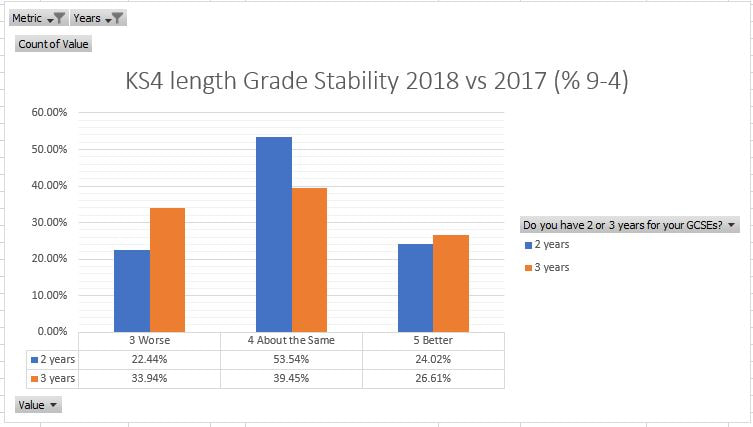
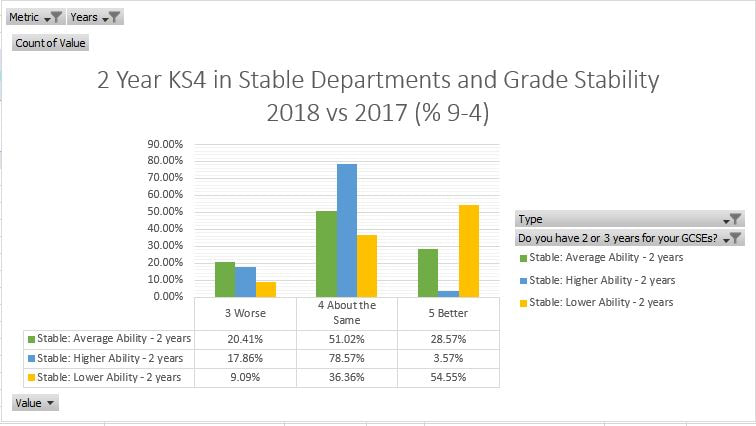
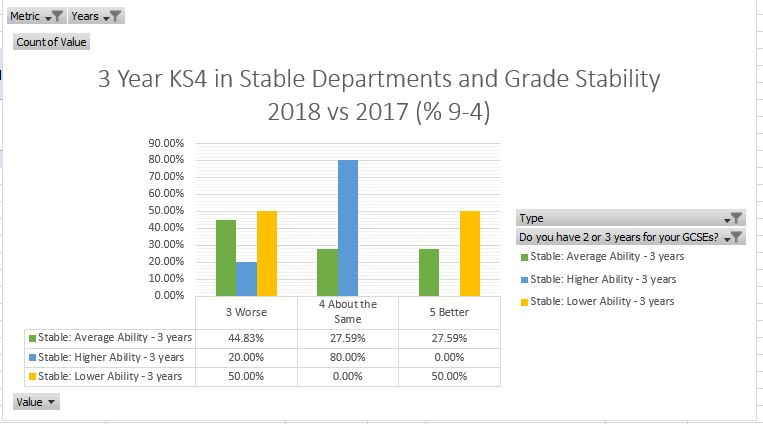
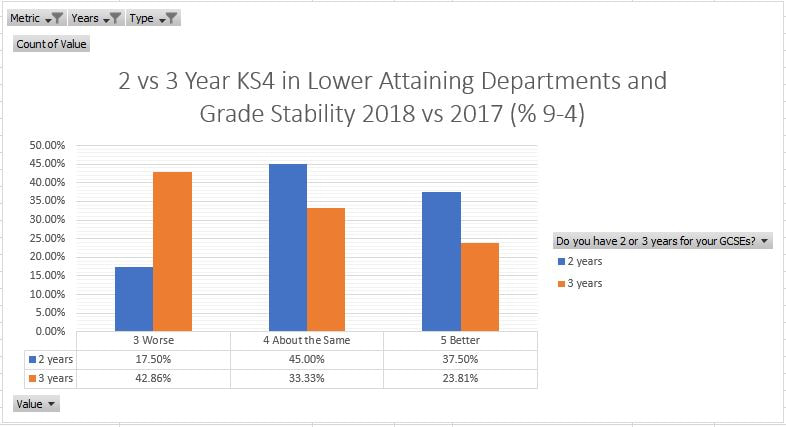
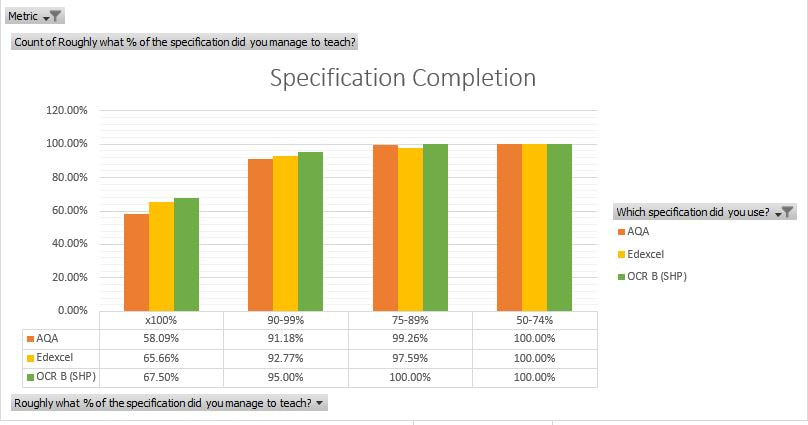
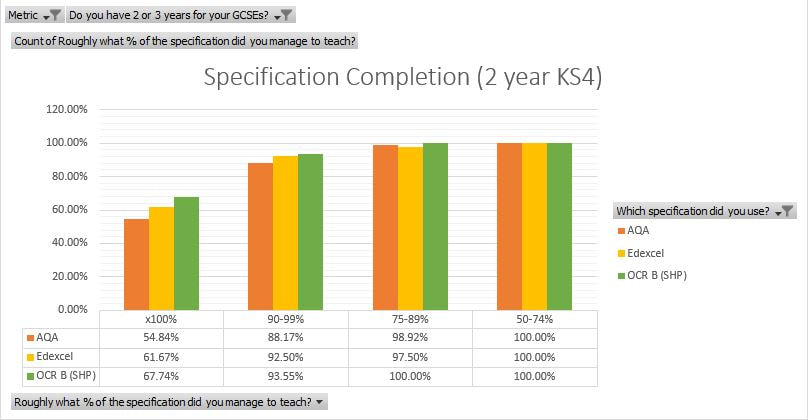
 RSS Feed
RSS Feed
